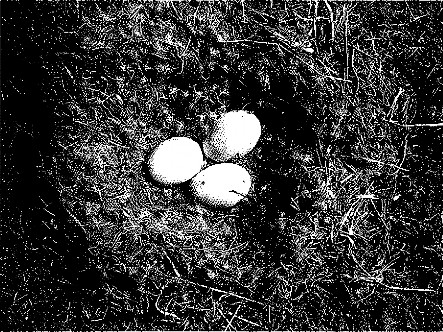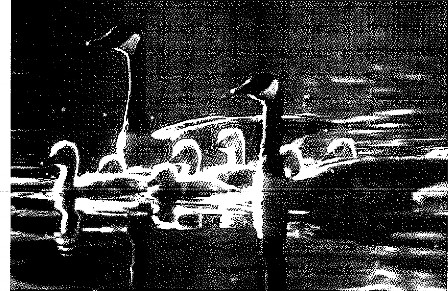
Nesting: Canada Geese build their nest with grass and plant material and line it with feather down. The geese typically nest on the ground on islands and shorelines. However, they're very adaptable birds and in urban settings nest where ever it seems safe to them -- even on the edge of the roadways or on the edge of the water traps on the golf course.

The female lays her eggs as soon as there is open water for mating and snow-free nest sites. The female typically lays a clutch of 5 to 7 white eggs (though the number can range anywhere from 2 to 12) while the male guards the nesting area. Laying the eggs is not a simple task. Each egg takes a little over a day to lay and she won't begin incubating until at least half the clutch is laid so all eggs hatch at roughly the same time. You may know from personal experience that if you accidentally wander into a nesting male's territory while looking for a good spot to lie your picnic blanket down, he'll come after you hissing with wings spread -- they look a lot bigger and move a fair bit faster when they're upset about something.